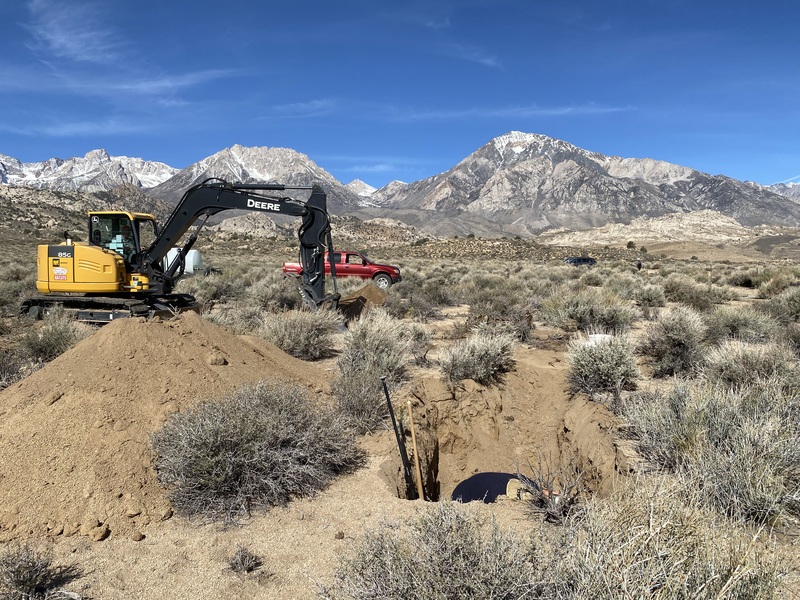We need a percolation test and soil profile in order to apply for a septic system permit. As soon as our property closed escrow, I contacted the local geotech company and scheduled the tests. I drove out to the property to observe because excavating holes feels like more tangible progress than reading code and therefore, it is exciting.
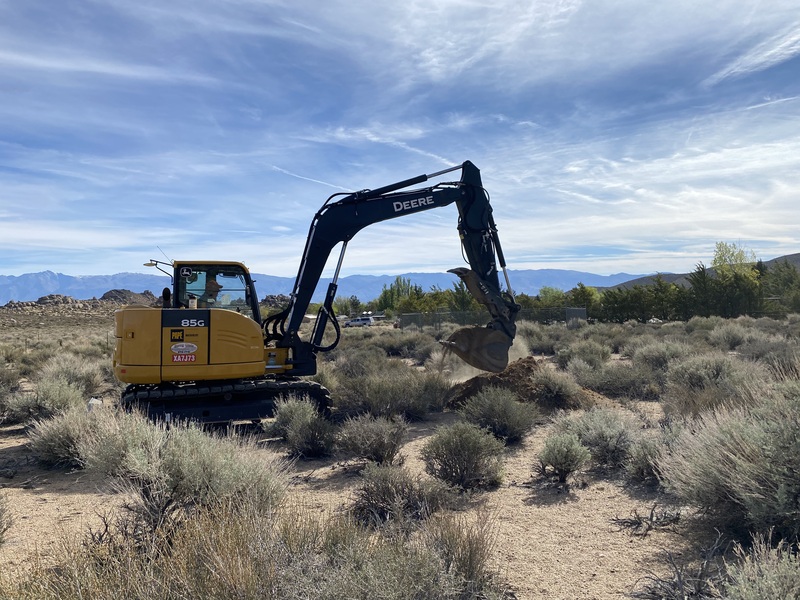
First, the excavator operator dug 3 holes. The first one was 8 feet deep to check for ground water and to get a soil sample to take back to the lab. The next two holes were 5 feet deep for the percolation tests. When the lab tech was finished with the 8′ hole, the excavator operator filled in that one and went back to the shop to do some work.
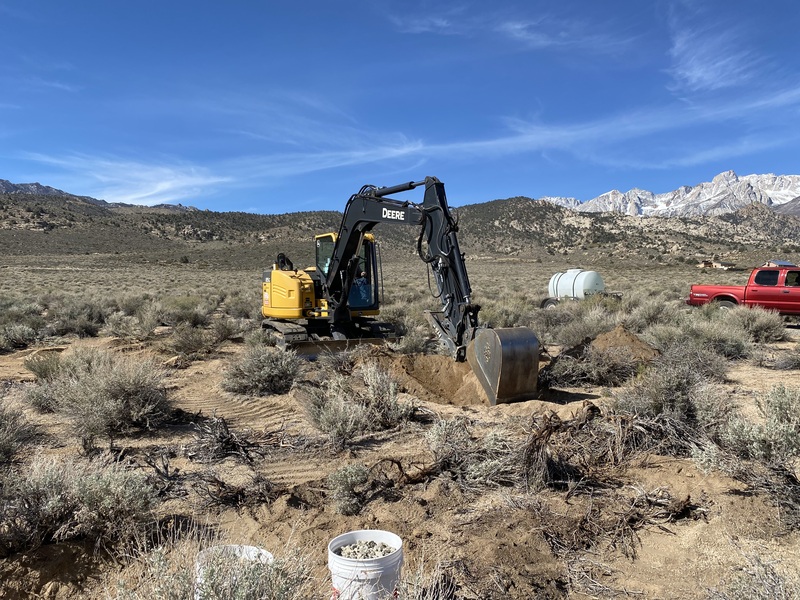
Next, the lab tech, Garret, dug a small hole at the bottom of each test pit, inserted a 14″ length of perforated 4″ plastic pipe, then surrounded the pipe with rock- 3/4″-1″ crushed aggregate, to be precise.
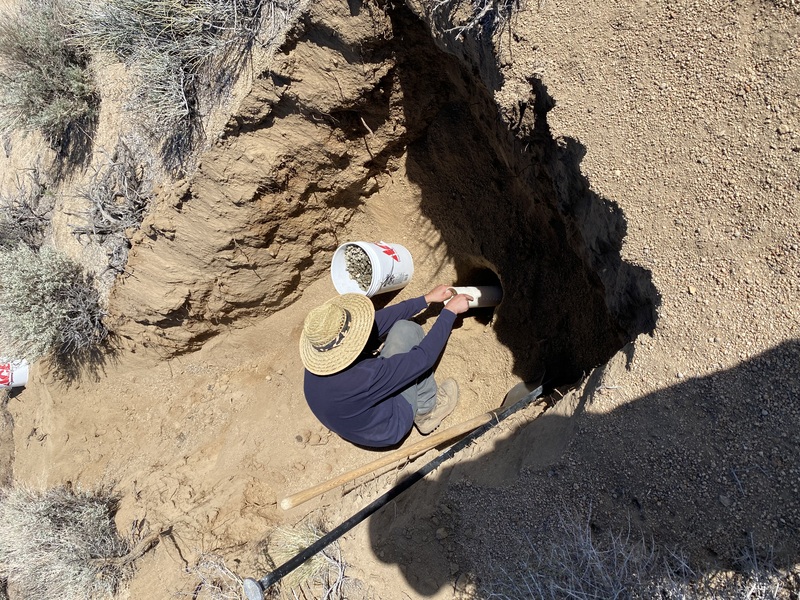
Then the exercise began. Up and down into each pit with 5 gallon buckets of water. Garret would pour water to the top of the perforated pipe and then go up and down into the other pit and pour water in that pipe. I mostly stayed out of his way, but I helped fill the 5 gallon buckets from the water tank when it got busy.
The filling of the pipes went on for hours in the heat. The forecast was 90 degrees that day. Garret took breaks every once in a while, so I would go back to my car to drink water.
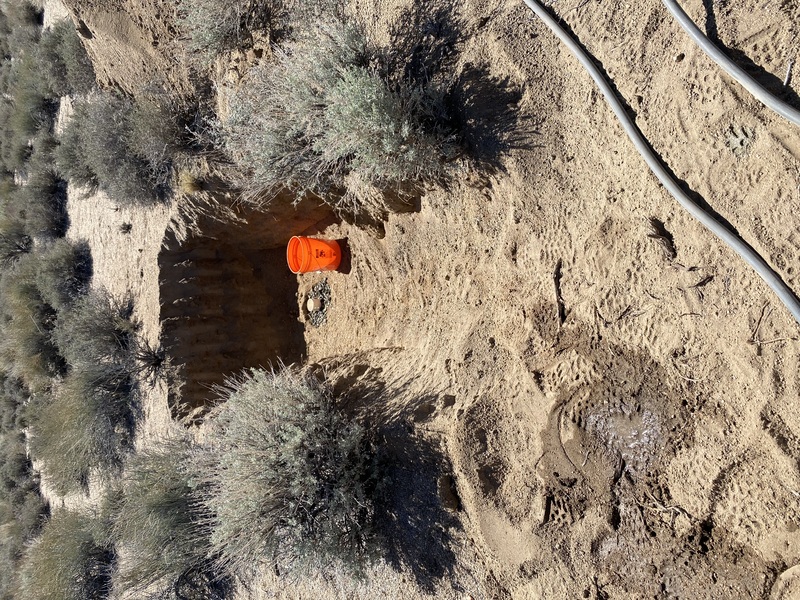
After several hours of saturating the soil, there wasn’t much of a change in percolation rate, so Garret began recording the times for each pipe-full of water to drain into the soil. The soil at this site is DG, for Decomposed Granite. It is mostly the size of sand or smaller. I thought the “or smaller” size would provide some resistance, but it looked like the water was draining through a colander. Although fast draining soil is much preferred to sluggishly draining soil, I hope it isn’t too fast. I’m waiting with bated breath for the geotechnical report.
